One day, your garden looked beautiful. The next, it didn’t. Maybe the weeds crept in while you were busy at work. Maybe your hydrangeas stopped blooming the way they used to. The garden that once gave you joy now feels off. The colour isn’t right, the plants are growing without direction, and something feels missing even if you can’t name it. You don’t know exactly when it changed, but it’s not the same space you put so much time into last spring.
Thankfully, you don’t need to tear everything out or chase some glossy, magazine-perfect standard. What you need is a practical way to clean up your outdoor space and bring it back to life, without starting from scratch. This isn’t about chasing trends, it’s about addressing what’s changed, knowing what your garden is asking for, and finding that rhythm again. This guide is shaped by real-world, professional experience in the Greater Toronto Area. Built to help you bring your garden back with purpose, clarity and a result you’ll enjoy spending time in and feel proud to show off again.
Structure First, Style Second
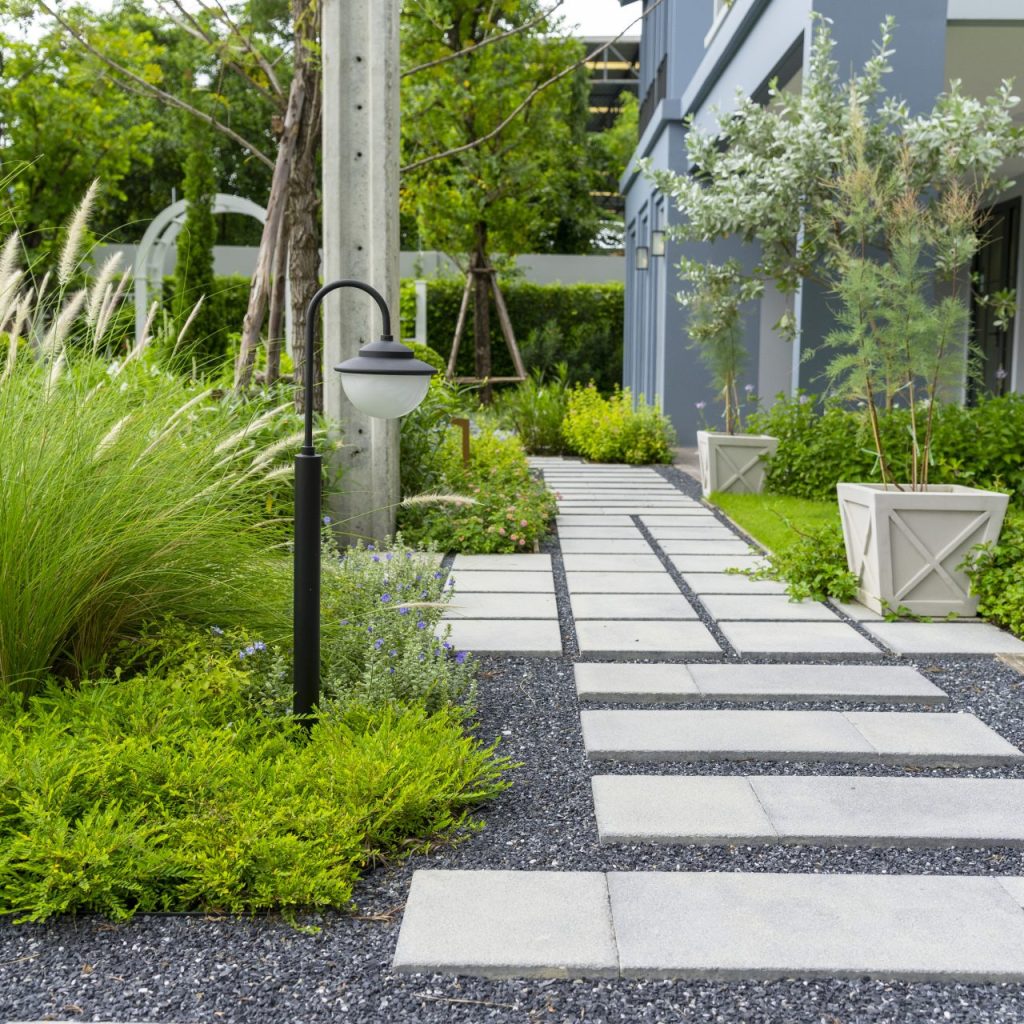
Getting your garden back on track rarely begins with planting. The starting point is usually a moment of noticing something feels off. Before any plant goes in the ground, it’s worth stepping back and looking at how the space is organized and what’s stopped working.
Structure here doesn’t mean fences or pergolas. It’s about the shapes of your beds, the direction of pathways, the flow between lawn and planting areas, and how all of that guides the eye through the space. When that structure starts to fade, whether it be from overgrowth, weather damage, or years of subtle health issues, the garden loses the order that once held it together. That’s where garden renovation in the GTA often begins: not with a trowel, but with a walk-through and a critical eye.
The Problem
It’s easy to fixate on flowers, but they aren’t the root cause when a garden feels off. Flowers are the finishing touch, not the framework. If your garden feels chaotic or undefined, the real issue is usually in the structure. Blurred edges, mismatched bed shapes, and disjointed layouts make everything feel messy, even if the plants themselves are healthy.
The Cause
Start by asking: are your beds still clearly outlined? Is the border between lawn and garden clean or is one creeping into the other? Has your pathway disappeared beneath turf or mulch? GTA weather swings between freeze, flood, and drought, which gradually wears away even well-designed spaces. Pavers shift, soil erodes, plants spread beyond their boundaries. When these subtle shifts build up, your garden loses its visual balance.
The Solution
Start with the edges. Reclaim the lines between beds and lawn. Define paths using mulch, crushed stone, or edging materials that fit your garden’s scale. Pull back plants that have overgrown their space and clean out encroaching weeds. These simple corrections reestablish order and give the garden a clearer sense of shape. From there, decisions about planting and styling get a lot easier.
Soil Is the Engine
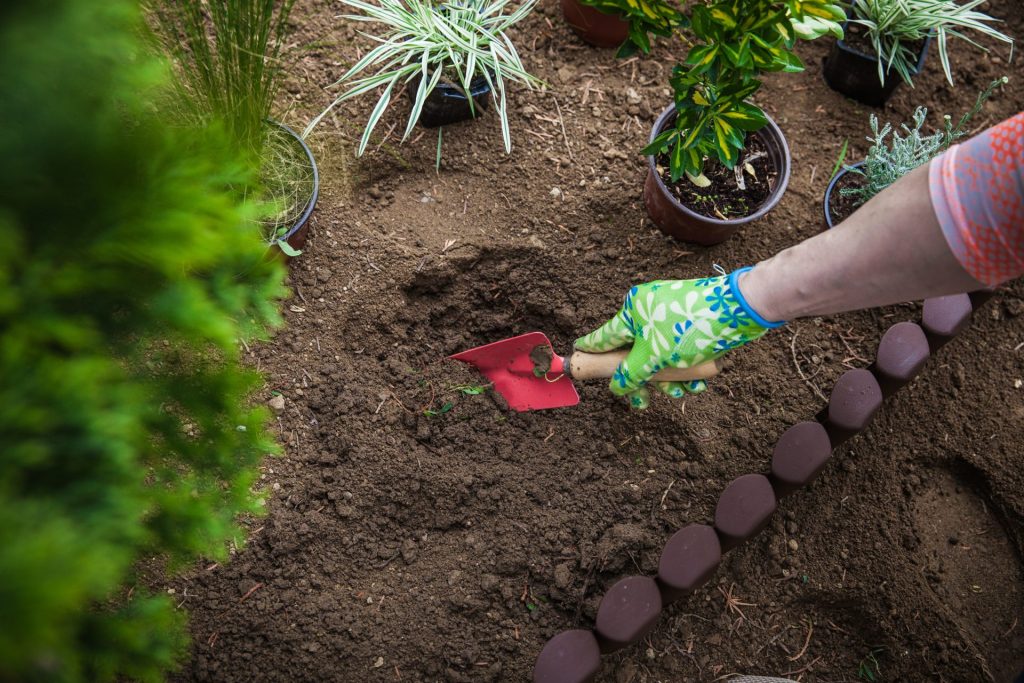
If structure is the skeleton, soil is what keeps everything running. It’s the foundation that decides how well your plants grow, how much effort you spend on upkeep, and how long the results will last.
What’s Hiding Below the Surface
In much of the GTA, garden beds sit on compacted clay or mixed fill leftover from construction. These heavy soils can trap water or block roots, making it harder for plants to establish and thrive. Even if your layout is solid, poor soil will undercut your work season after season. Understanding the condition beneath the surface is one of the most overlooked but essential garden renovation tips GTA homeowners can use.
How to Tell if It’s Working
Take a spade and dig in. If your soil crumbles easily and smells earthy, you’re in good shape. But if it feels sticky, pale, or dense, it likely needs improvement. Work in compost generously, avoid spreading it over the top, instead mix it six to eight inches down. Compost improves structure, boosts microbial life, and gives your plants the fuel they need to grow strong without constant intervention
The Ongoing Routine
Soil care is never one-and-done. Reassess in early spring and again in fall. Add mulch after planting and keep refreshing it each season to regulate moisture and suppress weeds. If you’re adding new plants, dig wide and deep, breaking up compacted soil in the process. Healthier soil means less watering, better resistance to stress, and a garden that performs consistently across unpredictable seasons in the GTA.
Choosing Plants That Work for Your Garden Renovation
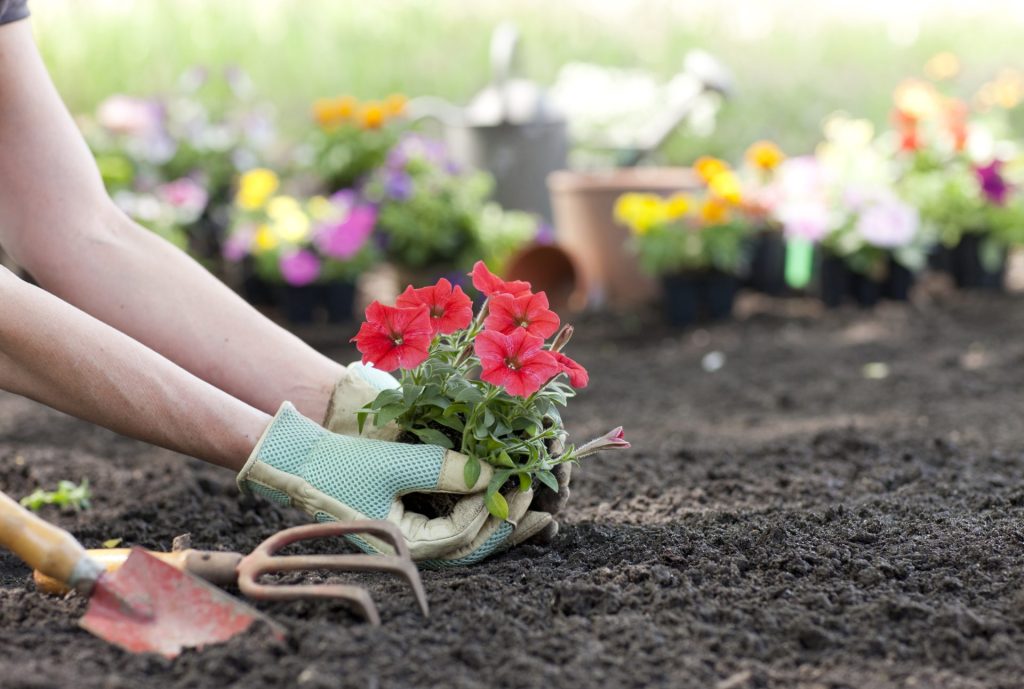
The most reliable gardens aren’t built from impulse buys at the nursery. They’re shaped around how your space behaves: where water collects, where sun hits hardest, and where wind strips away moisture. Your plant list should reflect that reality first.
Plants Worth Having
Choose plants that hold their form, bounce back fast, and don’t need constant attention. Coneflowers, yarrow, black-eyed Susans, sedum, and hostas all check those boxes. They handle heat, recover from rain, and stick around year after year without fuss. These are the workhorses of garden renovation that GTA homeowners can count on.
Build Using Structured Plants
Even a casual garden needs a framework. Shrubs like boxwood, ninebark, or red twig dogwood provide shape through every season. These anchor points define zones, support smaller plantings, and give the garden a rhythm that holds even when perennials fade.
Stick to Local
Native plants already know how to handle Southern Ontario’s curveballs. Butterfly milkweed, wild bergamot, serviceberry, and native grasses like switchgrass or little bluestem are low-maintenance and better for pollinators. They settle in faster and typically need less fuss once established. Including native species is an excellent method to build long-term resilience into your gardens.
Think Repetition
When plants repeat across a space, they create flow. This rhythm is easier on the eyes and easier to care for. Dense groupings suppress weeds, hold soil, and simplify maintenance. Place the tallest in the back, use reliable groundcovers at the base, and leave room for air to circulate. Repetition in planting is one of the simplest ways to stabilize your garden without making it feel over-designed.
Garden Renovation Phases
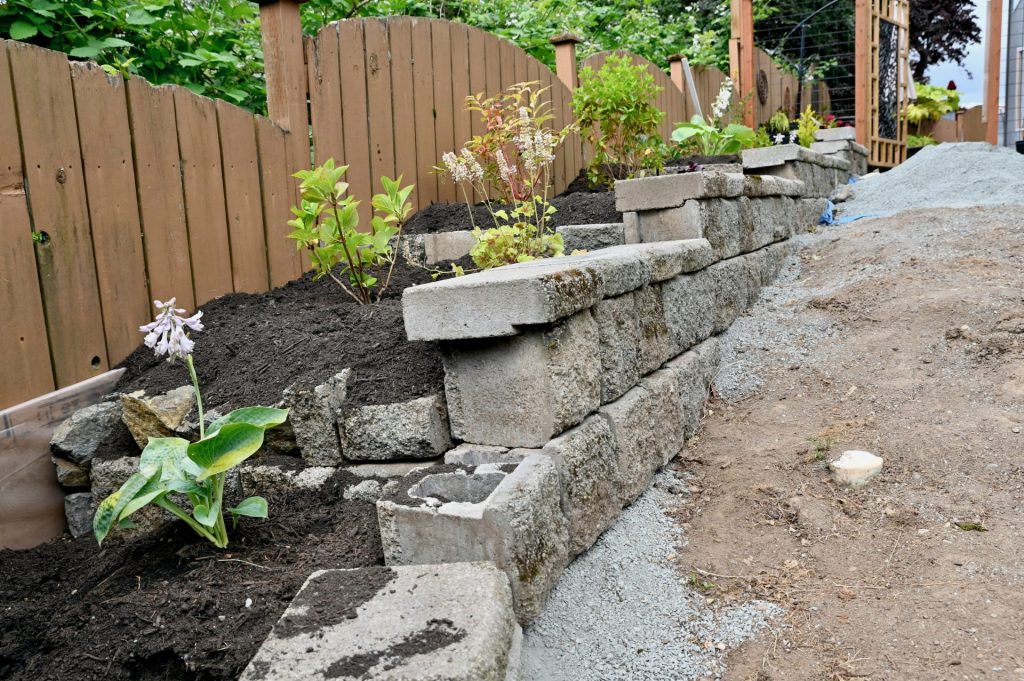
Trying to redo the whole garden at once usually backfires. Between unpredictable GTA weather, limited free time, and the physical effort involved, burnout comes quickly. Renovating in stages keeps things manageable and helps you make better decisions.
Start Small, Finish Strong
Pick one bed or corner and focus your attention there. Rebuild the soil, define the shape, plant intentionally, and mulch properly. A single finished section does more for momentum than a dozen half-done zones. As you see results, it’s easier to keep going with purpose and direction.
Avoid the Midseason Burnout
The first heatwave of summer is where energy often drops. It’s also when shortcuts start showing up in rushed planting, uneven watering, missed weeds. Taking on too much early in the season leads to more problems later. Instead, let the season stretch. Test ideas in one spot before rolling them out everywhere else.
Refinement Over Replacement
You don’t need to overhaul everything. Most gardens benefit more from refining what’s there than starting from zero. Fix the structure, amend the soil, remove what doesn’t work, and support what does. That approach builds a stronger garden over time, one that reflects the effort without asking for perfection.
Skip the full renovation and start where progress shows right away. Remember, one finished corner can change how your whole garden looks and feels.
Garden on Nature’s Clock
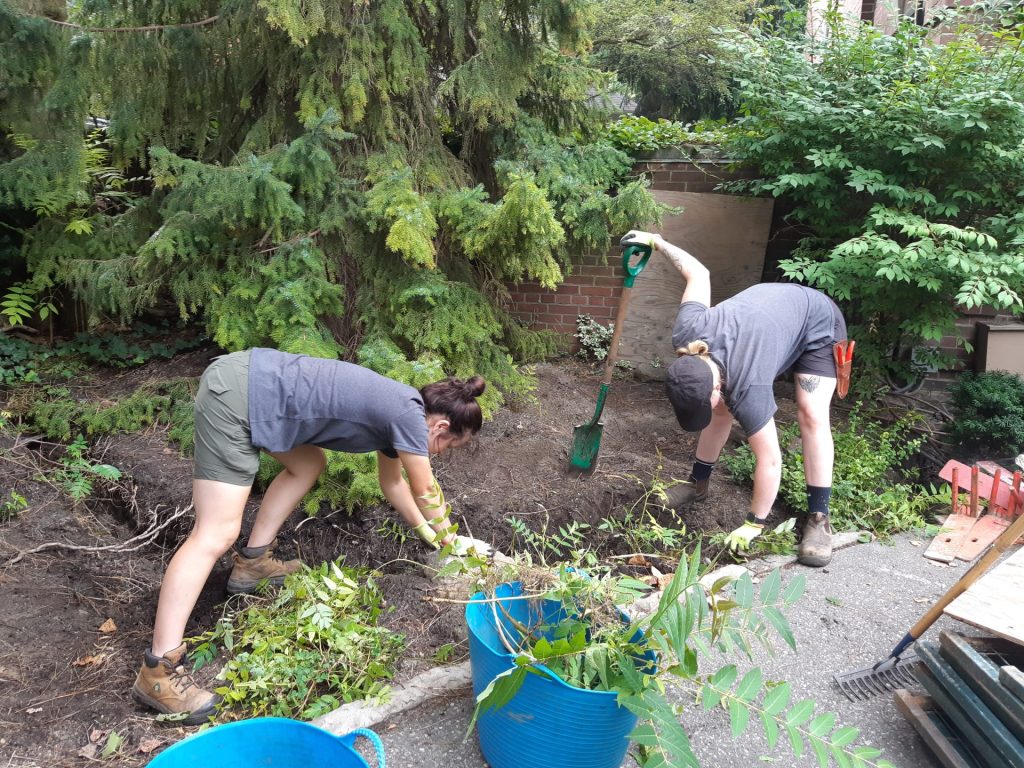
Unfortunately, GTA weather doesn’t offer predictable gardening conditions. Once spring arrives in mid-April, the next holds frost through May. Following a printed calendar leads to missed windows and unnecessary effort. Let the conditions call the shots.
Reset and Prepare in Spring
Use early spring to reset. Clear fallen branches, check for frost damage, and cut back perennials only once new growth is visible. Wait until soil dries before digging or edging. Stepping on soggy beds compacts the soil and sets back early growth. Compost and mulch now to support the season ahead.
Support and Monitor in Summer
Summer is for observing and adjusting. Water deeply and less often to build stronger roots. Weed before things go to seed. Deadhead perennials that need it. Watch new plantings for heat stress. Summer is also the time to monitor hardscaping. Cracked pavers and loose stones can cause issues if left too long.
Clean Up and Reassess in Fall
Fall is a fresh start in disguise. Pull out annuals, divide perennials, and top up mulch. Shred your leaves and use them as mulch, as it’s one of the best natural amendments for GTA soil. Don’t rush to cut back everything. Leave some seed heads for winter interest and wildlife. A tidy, winter-ready garden rebounds faster in spring.
Observe and Reflect in Winter
Winter exposes the shape of your garden. With foliage gone, you can clearly see lines, symmetry, and weak spots. Watch how snow settles, where water drains, and which paths remain usable. This is your quiet planning season. The patterns you notice now will guide your next steps better than any layout sketched on paper.
Know When to Step Back
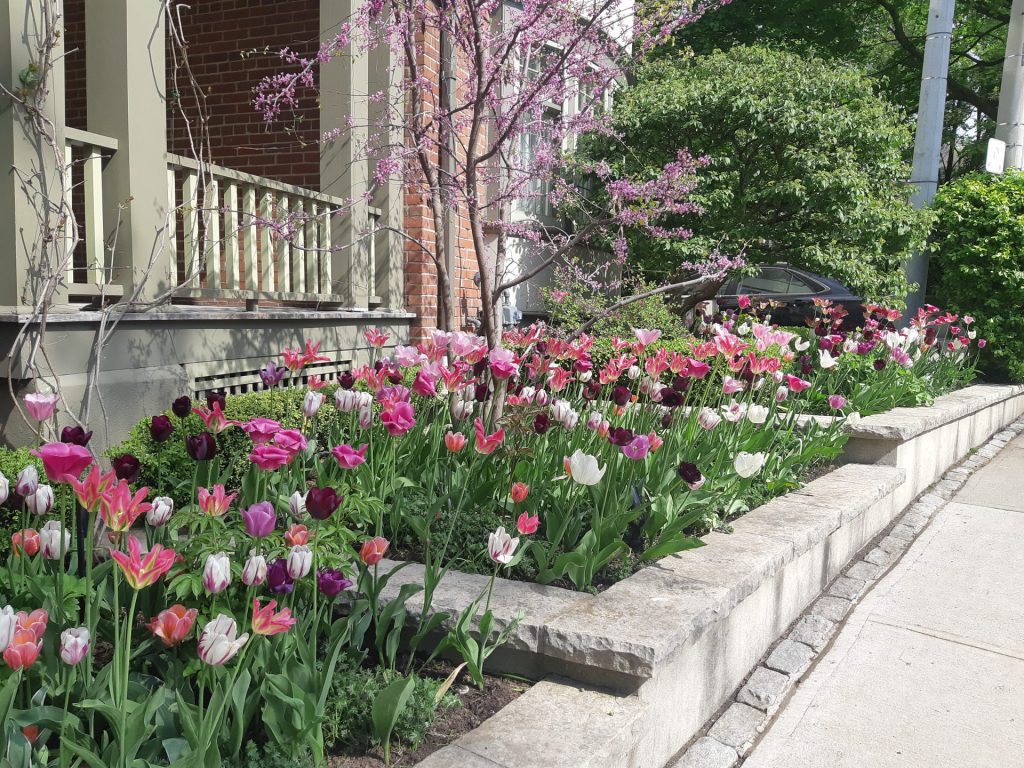
Good intentions often lead to overdoing it. More water, more fertilizer, more pruning. All mean well, but are not always helpful. Most garden mistakes don’t come from intentional neglect. They come from doing too much too soon, the idea is to learn when to pause and let your space speak for itself.
Too Much of a Good Thing
There’s a point where care turns into interference. Overwatering can suffocate roots. Over-fertilizing creates imbalances that stress plants instead of supporting them. Cutting back too early can stall blooming or disrupt the plant’s growth cycle. These habits tend to come from reacting instead of observing. Step back long enough to see the full picture before you act, because your garden often corrects itself better than you think.
Give Your Plants Room to Grow
Spacing is one of the easiest ways to set your plants up for success. Planting too closely might look full at first, but it encourages disease, competition, and extra maintenance later. Consider the mature size of each plant and plan accordingly. Feed based on the signs your landscape gives you, not a schedule. Look for yellowing leaves, slow growth, or poor flowering, as it can signal a need for more nutrients, or it could also indicate poor drainage or compacted soil. Not everything needs a product fix. Sometimes, your plants just need more time or better soil conditions.
Let the Roots Do the Work
In the GTA, summer watering habits can quickly go overboard. Most established plants don’t need daily attention. Watering deeply once or twice a week helps roots reach deeper soil layers where moisture lingers. This approach builds resilience during dry spells and reduces your workload. Focus on consistency, not frequency. The goal is to build self-sufficiency in your garden, not dependence.
Prune With Purpose
Every cut should have a reason. Remove dead or damaged branches, thin dense growth to allow airflow, or shape the plant to improve its form. But resist the urge to cut simply because something looks unruly. Many plants benefit from being left alone until they show signs of what they need. Pruning too early, especially in spring bloomers, can mean fewer flowers or weaker structure. Wait, observe, then act.
Keep Maintenance in Mind
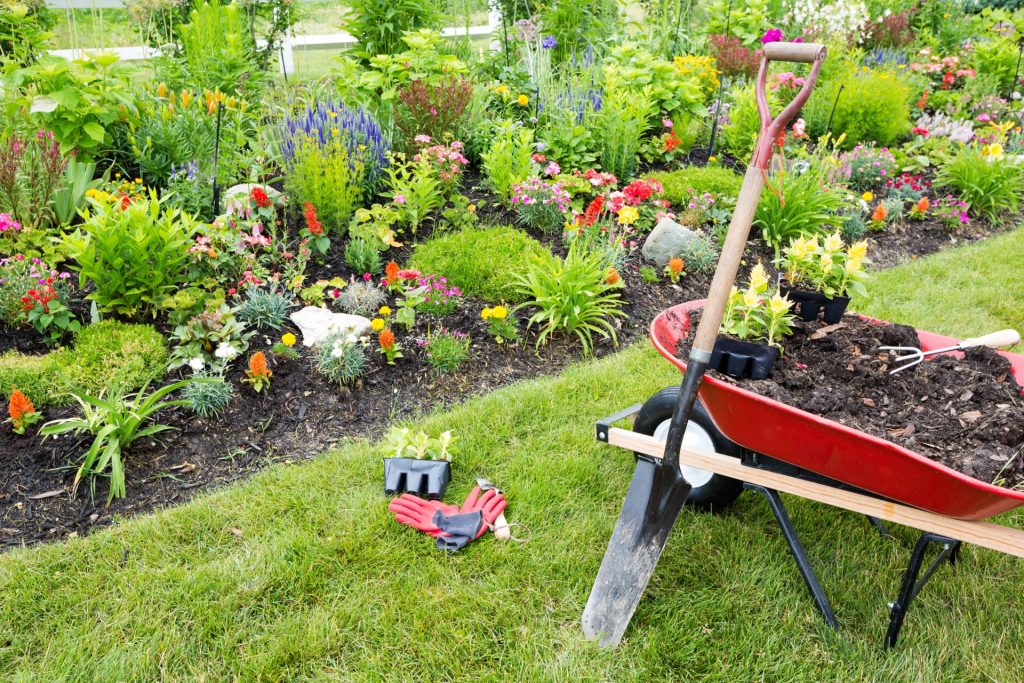
A garden that constantly asks for correction wears you down. If you’re always chasing shape, balance, or function, the issue is likely in the design. Maintenance should feel like upkeep, not a full-time job. Landscape renovation is about crafting a space that compliments and adds convenience to your life.
Design That Lasts
A strong design should stay that way in any season. That doesn’t mean everything blooms year-round, but the structure should still guide your eye even when nothing is flowering. Beds should be shaped in a way that doesn’t need constant redrawing. Paths should still make sense even when perennials have been cut back. A layout that stays consistent reduces the amount of work needed to keep things looking good.
Group by Needs
Don’t let looks be the only reason for where something goes. Plant placement based on water, light, and soil needs reduces the need for constant care and increases the chance for success. Group sun-loving, drought-tolerant plants together, and cluster your shade-loving or moisture-sensitive plants in their own areas. This way, each area can be managed more easily and with fewer mistakes.
Let Your Materials Do the Work
Think of the materials you use as your support staff. Mulch holds moisture, blocks weeds and regulates soil temperature on the surface. Groundcovers help with erosion and fill a space well. Gravel paths help with drainage and reduce runoff. Raised beds can solve soil issues and make planting more accessible. Strong edging choices like natural stone, steel, or trimmed turf help to keep each element of your garden in its lane, which ultimately can save you time throughout the season.
Design for Convenience
If you’re already updating your layout, it’s a good idea to make space for smarter solutions. Drip irrigation and soaker hoses distribute water without soaking foliage or evaporating in the sun. Adding solar lighting means you won’t have to manage complicated wiring during installation, risk chewing up your lighting cables with the lawn mower, or tripping over complicated wires in the dark. These kinds of tools support both your plants and your lifestyle, making your garden a place that adds value to your life and your home, without taking up a lot of your time.
A well-kept garden shouldn’t come at the cost of your free time. Let the right maintenance plan do the heavy lifting so you don’t have to.
Small Details Finish the Job
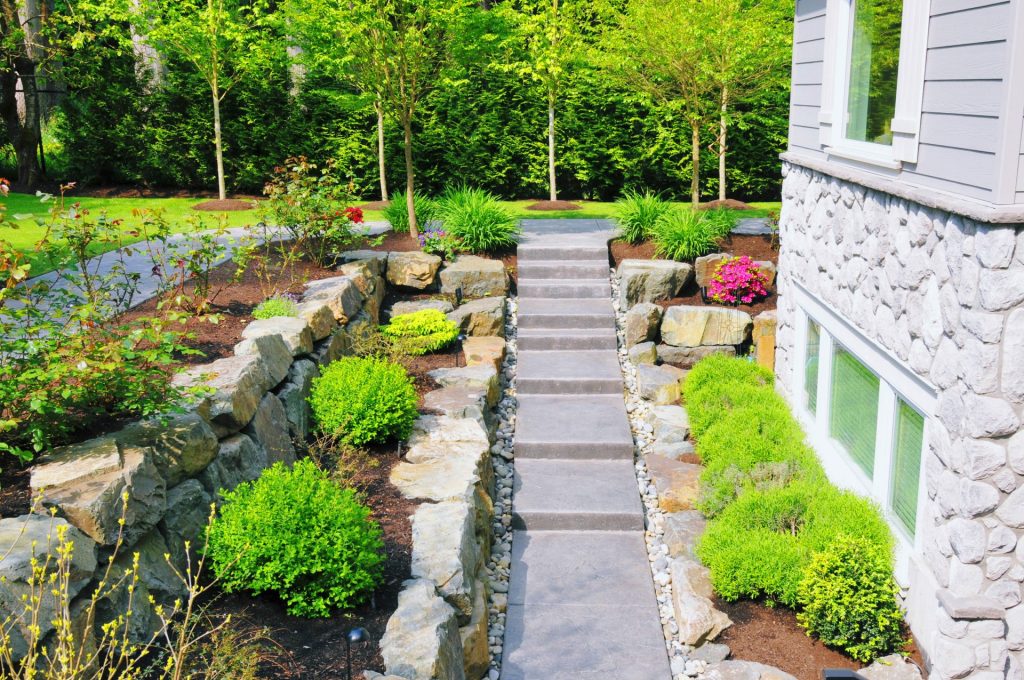
A garden isn’t finished when the last plant is in the ground. It’s finished when the space feels intentional. The pieces most people overlook, the sightlines, the textures, the small touches, are what make a landscape complete. Choose a focal point that holds attention without overpowering everything else. That could be a sculptural evergreen, a sleek corten steel planter, a minimalist water bowl, or a cluster of oversized ceramic pots in muted tones. It doesn’t need to cost much, it just needs to tie everything together.
Edit Your Colour Story
Colour is a powerful tool, it can either calm a space or make it feel chaotic. And sometimes, there is a very thin line between the two. Bold blooms all competing for attention can create noise instead of harmony. Pick a simple palette that complements your home’s exterior and echo it across different beds. Let foliage do the heavy lifting. Shades of silver, lime, or deep burgundy help hold structure even after flowers fade. This makes the garden feel balanced during transitions and less dependent on constant blooming to stay interesting.
Layer Texture and Scent
Texture brings quiet drama to your planting design. Broad leaves, fine fronds, upright forms, and trailing edges all work together to build movement and depth. Layering isn’t as complex as it seems, even switching the placement of two plants can shift the look of your whole bed. Add scent where guests pass through, like lavender near a seating area, or mint by your back steps. These additions are subtle and last longer than flowers. They also help to create memory in your space.
Keep the Decor Honest
Garden décor should blend in, not compete. Choose materials that weather well and hold their shape over time. Wood, metal, stone and terracotta tend to settle into a space instead of standing out. The goal here isn’t to make your garden look staged, it’s to make it feel lived in.
Garden Renovation Tips GTA Homeowners Actually Use
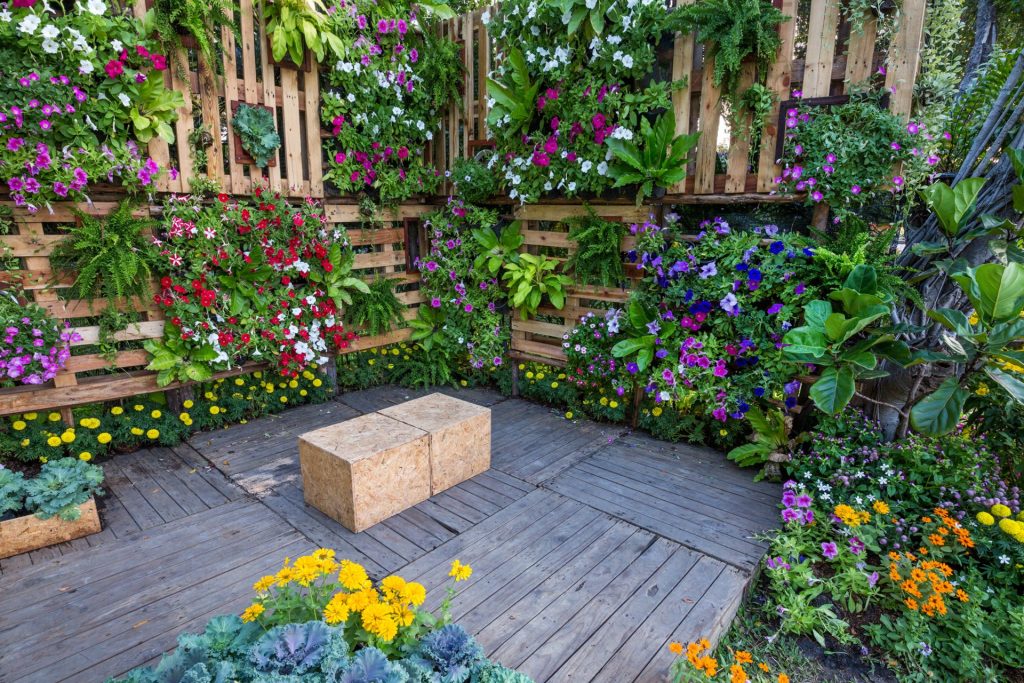
In the GTA, theory gets tested fast. Between late frosts, heavy rains, and mid-summer droughts, a garden that lasts has to work hard behind the scenes. Small decisions like what you plant, how you space it and where you build structure are what help your landscape hold up through unpredictable seasons.
Watch First, Work Second
Don’t rush into fixing everything all at once. Focus on a single bed, corner, or season. Take note of how it behaves before you commit to a full-scale plan. This saves time and reduces waste. Your garden will show you what’s working and what needs your attention, if you give it time to speak.
Track What’s Working
Weather patterns in the GTA shift from year to year. A plant that thrived one season might stall the next. Keep a record, even if it’s just a few notes or photos, of what you planted and where, and how it performed afterwards. This becomes your garden roadmap and can save you from making the same mistakes again.
Maintain the Frame
Hardscaping is often overlooked, even though it shapes how your entire garden functions. Wobbly stones, broken edges or a leaning trellis can interrupt your landscape, meaning you’ll be stuck doing extra maintenance. Make sure any paths, borders, and anchors of your garden are structurally sound. A landscape design that works only during peak season won’t be able to carry your garden through fall and winter. A reliable frame gives everything else something to lean on.
Trust What You Know
You already know the wind tunnel between your garage and the fence. You know which corner gets afternoon heat and which one holds onto morning dew. That local knowledge is more valuable than any template. Build with it in mind. A successful garden follows the patterns you already know, far better than the ones on someone else’s diagram.
GTA Landscaping Tips
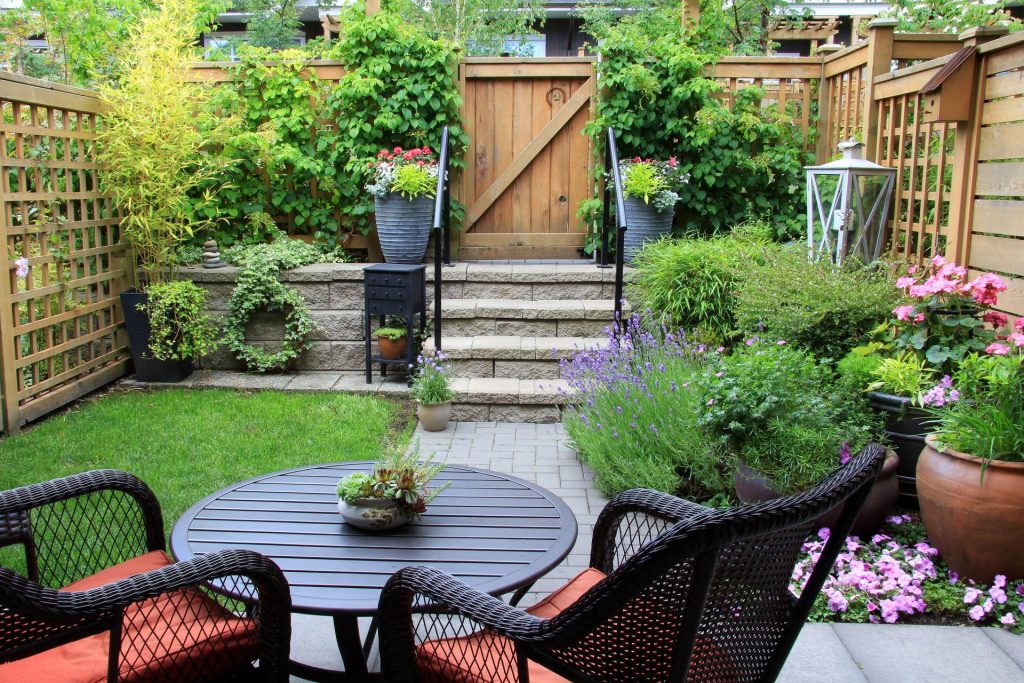
Gardening in the GTA means dealing with compacted clay, drainage challenges, wild weather shifts, and limited growing windows. There’s no perfect formula, but there is a smarter way to plan: prepare for unpredictability, and use the conditions to your advantage.
Read the Conditions First
Let the weather decide your timing. Prune once frost has passed. Plant when the soil warms, not when the calendar says so. Watch for sudden heatwaves and adjust your plans if needed. Rain on the horizon? Water early to prevent stress. Responding to conditions instead of fighting them keeps your plants healthier and reduces your workload.
Check Drainage Early
Before planting anything, see how your soil holds water. Heavy spring rains and autumn storms can drown roots fast if water has nowhere to go. Raised beds, grading adjustments, or lighter soil mixes can make a huge difference. Compost improves structure, but if water is pooling or sitting for days, it’s time to look at drainage solutions. In some cases, a professional assessment is worth it.
Layer for Protection
Use layers to build resilience. Trees provide shade and wind protection for the plants below. Shrubs buffer perennials from temperature swings. Groundcovers reduce erosion and lock in soil moisture. When your plants support each other, your garden becomes stronger and easier to care for. It also looks better through each season.
GTA conditions are tough, but plenty of gardens have found their rhythm with the right action plan. See what’s possible when local knowledge meets the right kind of care and a design that’s impossible to ignore.
Garden Maintenance Toronto Homeowners Can Count On
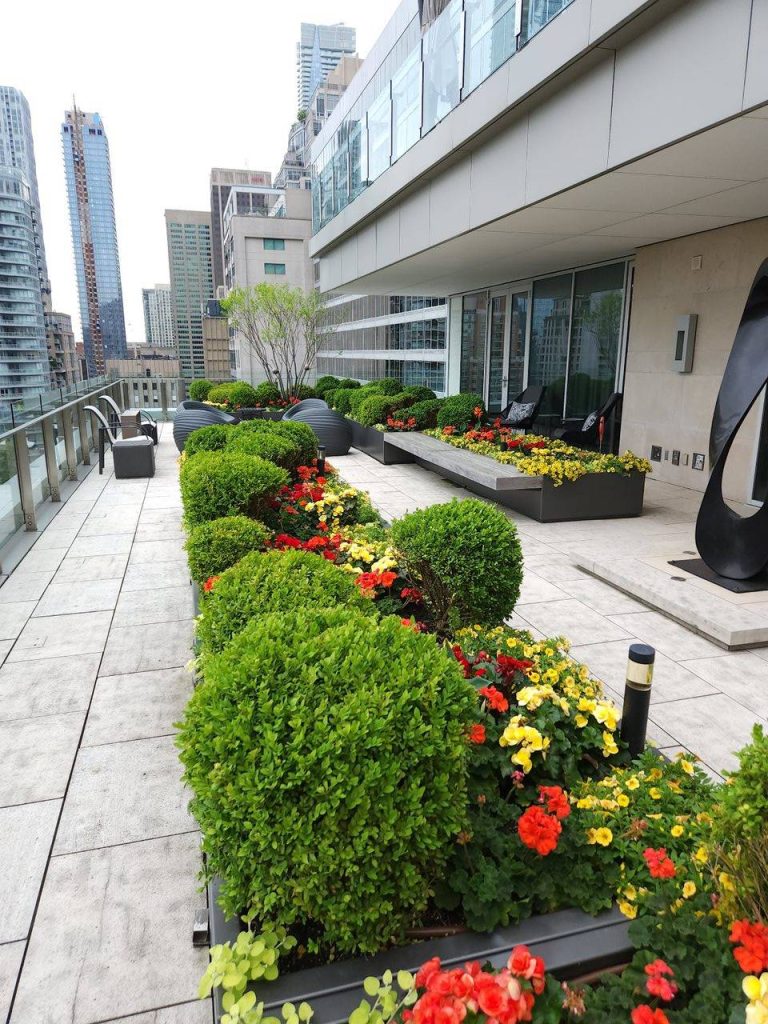
Maintenance gets easier when your garden is set up to work with you. It shouldn’t take over your week. Once your structure is solid and your plant choices are aligned with your space, care becomes routine instead of a chore.
Make a Habit of Checking In
Walk through your garden once a week. It doesn’t have to be a deep maintenance session, just make note on what’s blooming, what’s fading, and what’s changed. Catch issues early, look for signs of pests, gaps in mulch, or stress in new plants. These small check-ins can keep small problems from growing into larger issues.
Keep Your Tools Ready
Sharp, clean tools make the job smoother. Clean your pruners after each use, replace damaged hoses before they leak all over your borders. These small tasks basics add up, so having your tools in order saves more time than you think, making you more likely to tackle jobs more efficiently when they come up.
Make Room to Pause
A garden should give something back to its’ caretaker. Build yourself a quiet spot: a hammock strung between two trees, a cushioned lounger tucked into a shady corner, or a daybed layered with pillows under a vine-covered pergola. A garden that only asks for your energy isn’t done yet. Let it be a space that returns something to you without asking.
Your Garden Has More to Give

Gardens don’t forget what they once were. Even when the edges blur and the colour fades, something steady is still beneath the surface waiting to be noticed again. Sometimes all it takes is a few honest choices and the help of someone who knows how to read the signs. Not a big reveal. Not a dramatic overhaul. Just small changes that bring you back into rhythm with the space you’ve always cared for.
Our team at Yorkshire Garden Services has spent years bringing GTA gardens back to life. Not just with smart planting and structure, with the kind of instinct that comes from knowing every slope, soil quirk, and growing challenge the region throws our way.
The right garden should be less to manage, not more to fix. Contact our team today for professional gardening services.





